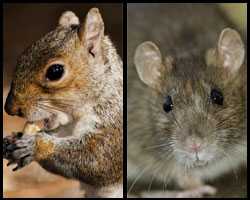Transmission

Monkeypox infection has been observed in a wide variety of mammals, including non-human primates, rodents, and squirrels.
Veterinarians should consider all mammals susceptible to monkeypox and be aware of how the disease transmits from animal to animal.
In Africa, serologic evidence of monkeypox infection has been observed in a wide variety of mammals, including non-human primates, rodents, and squirrels. Monkeypox virus has been isolated only twice from animals in the wild. Once from a rope squirrel found in the Democratic Republic of the Congo in 1985 and once from a mangabey found in Cote d’Ivoire in 2012.
The role of that or any other particular species as a reservoir has not been established. Several species of primates and rodents are known to be susceptible to infection with monkeypox virus. Because the types of animals that may become ill with monkeypox are currently unknown, all mammals should be considered susceptible as a precaution.
The route of transmission from animal-to-animal may occur through respiratory droplets, inhalation of aerosolized virus or organic matter containing virus particles (e.g., via the disturbance of virus in contaminated bedding), skin abrasions, the eye, or through the ingestion of infected animal tissue.
- Page last reviewed: May 11, 2015
- Page last updated: May 11, 2015
- Content Source:


 ShareCompartir
ShareCompartir